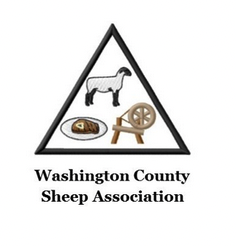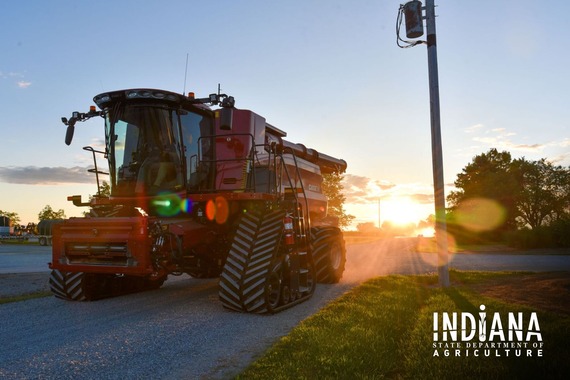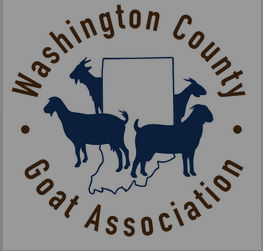
Free soil sampling program available for Indiana farmers
INDIANAPOLIS (Sept. 23, 2024) — The Indiana State Department of Agriculture (ISDA) and partners throughout the state have worked with the Gulf Hypoxia Program (GHP) to develop a no-cost program with a focus on increasing the knowledge and use of soil sampling as a nutrient management practice to benefit farm operations. The program, titled Indiana’s Mississippi River Basin Soil Sampling Program, is open now for applicants through Nov. 1, 2024.
“Soil health is incredibly important, and our farmers remain diligent in protecting and enhancing their farms’ soil properties,” said Lt. Gov. Suzanne Crouch, Secretary of Agriculture and Rural Development. “One way to enhance soil health is to identify nutrient levels via soil sampling. Unfortunately, this can be another expense farmers cannot afford, so we are thankful that with the help of our partners, farmers can sign up to have their soil sampled and tested at no cost.”
ISDA promotes the importance of nutrient management and the principle of the 4R Nutrient Stewardship framework. The 4R framework incorporates using the “Right Source, Right Rate, Right Time, and Right Place” to achieve cropping system goals. The program focuses on soil sampling and testing because it is a key component, and first step, of developing a plan for nutrient management.
Soil sampling provides an assessment of the soil’s fertility which can be used for making fertilizer application recommendations, assessing available nutrients over time, increase farmer profitability and enhance environmental protection by reducing the risk of nutrient loss. This project was developed to help further Indiana’s State Nutrient Reduction Strategy efforts.
“Farmers bottom lines are tighter than ever, so this free program will be welcomed again with open arms,” said ISDA Director Don Lamb. “Last year’s free soil sampling program was so successful we had to close program sign-ups sooner than anticipated to ensure we had enough available resources, so we are beyond excited to bring this program back to Hoosier farmers this fall.”
This program includes row crop, pasture, hay and specialty crop fields located within Indiana’s portion of the Mississippi River Basin. Eligible landowners will be prioritized by acreage enrolled (i.e., 100 acres or less), fields that have never been soil sampled and fields that haven’t been sampled regularly (i.e., within the last 4 years). Further prioritization may be implemented based on ISDA’s workload capacity. This program excludes hobby gardens and private lawns. Interested farmers can sign-up online at ISDA’s website or by reaching out to
Sign-ups begin Monday, Sept. 23, 2024, and ISDA is accepting registrations until Friday, Nov. 1, 2024. To sign up, or if you have any questions, please contact Ophelia Davis at 317-232-0305 or
This program is meant to demonstrate the importance of soil sampling and the valuable information it can provide. This program is not meant to act or replace an operation’s existing soil testing schedule. This program was made possible thanks to ISDA, Indiana Soybean Alliance, Indiana Corn Marketing Council, Indiana Agriculture Nutrient Alliance (IANA),Indiana Conservation Partnership (ICP) members, farmers and crop advisors.

The Washington County Sheep Association will hold its 18th annual Midwest Hair Sheep Sale on Saturday, Oct. 5, at 1 p.m. EDT at the Washington County Fairgrounds located at 118 E. Market St. in Salem. Sheep will be penned and ready for viewing by 11 a.m.
Thirty-one rams, 88 ewes, 1 pen of ewes, and 2 flocks from Indiana, Illinois, and Virginia are consigned. Breeds include registered and commercial Katahdins, Dorpers and White Dorpers. A complete listing of consignments is available at: https://extension.purdue.edu/county/washington/index.html.
For more information, contact the Washington County Sheep Association: Aaron Walker, 812-620-3356; Jason Webster, 812-752-5700, or Purdue Extension – Washington County, 812-883-4601.
Anyone wanting to start a flock, add to their flock, or learn more about the hair sheep industry is encouraged to attend this sale.
The Washington County Sheep Association will have concessions available at the sale.

Harvest season is officially underway for Indiana’s 94,000 farmers, which means more slow-moving farm equipment will be on Indiana’s rural roads and highways. To keep Hoosiers safe this year, state agencies are asking motorists to be alert and patient, as they share the road with farm equipment this fall.
“The fall is an exciting time for all Hoosiers as the temperatures cool and the leaves turn colors. And Hoosier farmers share that excitement as they prepare to begin harvest,” said Lt. Gov. Suzanne Crouch, Indiana’s Secretary of Agriculture and Rural Development. “While traveling rural roads and highways this fall, remember to watch for large farm equipment moving between fields as they work to harvest the crops, and be sure to know the proper steps to safely navigate around.”
In 2022 four vehicles were involved in crashes with farm equipment in Indiana which resulted in one death, according to the National Highway Traffic Safety Administration.
“Moving farm equipment can be one of the most dangerous parts of a farmers job,” said Don Lamb, director of the Indiana State Department of Agriculture. “When motorists know how to safely navigate around farm equipment, our roads are safer. By working together, farmers and everyday Hoosiers can ensure they arrive safely to their destination.”
Farm equipment during harvest season could include tractors, combines, grain carts, grain wagons and large trucks hauling agricultural products. These vehicles are wide, sometimes taking up most of the road, and often travel at speeds no greater than 25 mph.
The following list includes several safety tips for motorists approaching large farm equipment:
- Farmers will pull over when they are able to let motorists pass, but it may take time for them to get to a safe place to do so.
- Be alert. Farm equipment is wide, sometimes taking up most of the road.
- Be careful when passing. Do not pass in a designated “No Passing Zone” or within 100 feet of any intersection, railroad grade crossing, bridge, elevation structure or tunnel.
- Do not try to pass a slow-moving vehicle on the left without ensuring that the vehicle is not planning a left turn. It may appear that the driver is pulling over for you to pass when it is actually preparing to turn. You will drive right into its path, endangering yourself and the farmer.
- Avoid tailgating, as some farm equipment might have to make sudden stops along the road.
- Allow plenty of time to get to a destination, be aware of alternate routes and avoid distractions.
“When you see farmers out working and moving from field to field, please be patient as they work to harvest their crops which are needed to help feed our communities and the world,” said Doug Carter, Indiana State Police Superintendent. “Let’s all work together to help ensure everyone’s safety on our roadways.”
For a list of safety tips, click here or visit isda.in.gov. Click here for a video message created by Hoosier Ag Today, in partnership with Keystone Corporative. The following organizations will be working together to share this important safety message during planting season: Hoosier Ag Today, Indiana Department of Homeland Security, Indiana Department of Transportation and Indiana State Police.

Goat producers are invited to the Washington County Goat Association’s Annual Meeting on Tuesday, September 24, at 6:30 p.m. at the Washington County Government Building (806 Martinsburg Rd.) in Salem. The meeting will include Association business, election of board members, and a farm tax presentation by Lisa Singleton, CPA. Light refreshments will be served.
Association annual dues of $20 may also be paid at the meeting.
Those unable to attend the meeting, but who would like more information about becoming an association member can contact the Purdue Extension – Washington County office at 812-883-4601 or by visiting the Extension website at https://extension.purdue.edu/county/washington/anr1/sub-page-goat-association.html.
RSVP’s are not required to attend the Annual Meeting.

This informal report by the Division of Entomology & Plant Pathology is a commentary on insects, diseases, and curiosities division staff encounter on a week-to-week basis. Comments and questions about this report are welcome and can be sent to your respective Inspector.
Our Website
Inspector Territories
Caydee Terrell (Nursery Inspector & Compliance Officer) -
Last week I found this weird mottling on Rudbeckia. I figured it was a virus, so I took it to get tested. Purdue Plant Diagnostic Lab (PPDL) sent a report back saying the plant was positive for tobacco streak virus along with the following statement: Although extension publications mention this virus on Rudbeckia and it is widely known on other crops, I cannot find journal publications documenting it on Rudbeckia. So, that was a pretty cool find!

Also, I came across four spirea plants that had weird but also cool mottling as well last week. Although we did not get the viral tests ($100 for each test), PPDL determined we were most likely looking at spirea yellow leaf spot virus.


Jared Spokowsky (Nursery Inspetor & Compliance Officer) -
I had a couple of interesting encounters this past week. The first thing I found while doing a USDA bee sample. After I had completed it, I was watching a varroa mite that was on a larva that I had knocked out of the frame. However, it was not the mite that captured my interest, but a small brown line that was moving. After observing it for a while it appeared to be a maggot or small worm of some description.
The only thing that I can hypothesize is that it was a bee louse larva. Bee lice (Braula coeca Nitzsch) are small wingless flies about the size of a varroa mite. They are generally overlooked by most beekeepers and are not considered a major hive pest. They are not all that well studied but the larvae generally are thought to feed on honey or pollen and can cause minor damage when they tunnel under the cappings of sealed honeycomb. If you want to learn more about them please follow this link to the University of Florida page for more information.
Upon further conversation with more knowledgeable people than myself, I no longer think this was a nematode of some description. I’m kicking myself for taking it out of the pan and leaving it on the hood of my vehicle because it ended up rolling off the hood and I couldn’t find it again.

A second interesting scenario last week happened while doing a nursery inspection. At the nursery, I ran across a very heavy infestation of tuliptree scale. The trees were blackened from sooty mold which was noticeable from 100 yards away. Upon closer inspection, a local beekeeper had put two hives under these trees for the pollination of some pumpkins that had been planted adjacent to the trees. Pretty much every flying thing that can sting was hanging around including European hornets, baldfaced hornets, yellow jackets, paper wasps, and bumble bees. The honeybees were pretty content to ignore the honeydew and were working the pumpkin flowers and some common milkweed around the edge of the field.
There was a pretty intense amount of competition for the honeydew and I witnessed more than one baldfaced hornet get taken out of the air by European hornets. There were several dead and dying baldfaced hornets under the trees and I spent some time watching the hive entrance hoping to get some photos of hornet aggression with bees. Unfortunately, the bees were proactive in defending the hive and wouldn’t let me sit close enough to the entrance to get good photos. I continued to try and get some more photos of hornets but after having multiple close calls of hornets fighting and dropping on me out of the trees and almost down my sweatshirt, I decided I had pushed my luck far enough.



Another interesting find was a moderately heavy patch of rough oak bullet galls on swamp white oaks. These too had lots of flying stinging things hanging around and there was pretty intense competition for the nectar being produced. Bullet galls are formed by cynipid wasps. The wasp larvae are able to induce their host to form the galls which they live in and feed on. The galls also have extrafloral nectaries which secrete nectar and attract other insects like ants and wasps. In this case, there was not that much ant activity, but the hornets were out in full force and also some wasps which I believe to be in the Tiphiidae family (possibly Tiphia pygidialis). These are similar to the photo I submitted a couple of weeks ago of the five banded thynnid wasp and they are parasitoids of beetle larvae. If you would like far more detail on this fascinating bullet galls/cynipid wasp complex I would encourage you to read this write up in the OSU Buckeye Yard & Garden onLine (BYGL) by Joe Boggs.


Lastly, I had a nursery change hands and the new owner was not aware that barberry (Berberis) including ones labeled “non-invasive” cannot be sold in Indiana under the Terrestrial Plant Rule and a stop sale was issued for these.

Kristy Stultz (Nursery Inspector & Compliance Officer) -
Fall is near and competition can be tough for the best resources. Honeybees (Apis spp.) and a soldier beetle (Chauliognathus pensylvanicus) all try to get the best from this compass flower (Silphium laciniatum).

Weather in the Midwest is a very fickle thing. With warm days and cool nights comes early fall color. Compound that with the intense heat and low humidity of the days to come and trees are going to be under a lot of stress. Many will likely begin to show signs of early senescence. However, it’s always a good idea to double check those trees with early fall color. As can be seen by these photos, sometimes that color is caused by an insect stressor. In this case, Japanese maple scale (Lopholeucaspis japonica) has gotten to extremely high levels. When levels get this high, it can be difficult to tell if there is more than a single species of scale present (there could be) and treatment is much more difficult.

Angela Rust (Nursery Inspector & Compliance Officer) -
Just sharing a couple of photos this week. Herbicide injury on grape and a parasitized tobacco hornworm caterpillar on tomato.
If you see a hornworm caterpillar on your tomato plant that looks like this – leave it! This caterpillar has been parasitized by a small wasp which inserts its eggs into the caterpillar. The growing wasp larvae inside the caterpillar will consume it from the inside out. The grown larvae will then form white oval cocoons for pupation on the outside of the caterpillar. Adult wasps will emerge and provide more natural enemies in your garden area for future seasons.

SalemLeader.com
Leader Publishing Company of Salem, Inc.
P.O. Box 506
117-119 East Walnut Street
Salem, Indiana. 47167
Phone: 812-883-3281 | Fax: 812-883-4446
Business Hours:
Mondays through Fridays, 9:00am - 5:00pm
News:
news@salemleader.com
Office:
office@salemleader.com
Publisher:
publisher@salemleader.com
Business
- More Business News
- Go To Guide
- Business Directory
- Auctions
Education
- More Education News
Opinion
- Editorials
- Letters to the Editor
- Columns
- Unsung Heroes
- Days Gone By
- In the Garden
- Guest Columns
- Reader's Poll
- Salem Leader Forum
- Questions and Answers
Church
- Bible Aerobics
- Church News
- Church Directory

